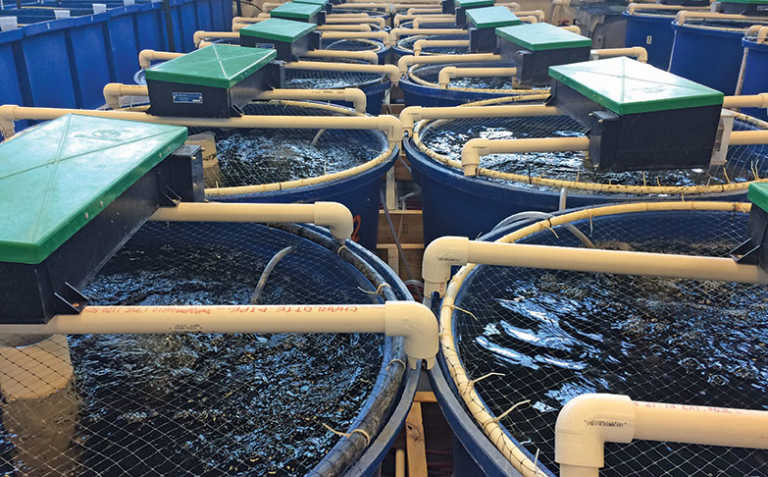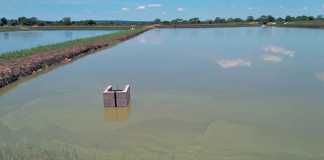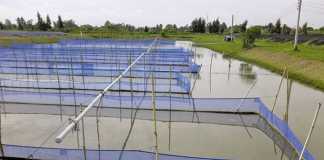
Photo: Narek75/Creative Commons
Off-the-shelf aquacultural equipment may be convenient, but it is often unsuitable. I discussed this problem in an earlier article, highlighting the use of circular plastic tanks rather than the preferable custom-made ones. Let’s look at other equipment.
Except for the rare cases of gravity-fed aquatic systems sometimes found in trout culture, the vast majority of warm-water systems rely on pumping water.
As these are typically recirculating systems housed in tunnel structures, a large volume of water needs to be moved continuously, but over short distances and low heads. The design, size and cost of the pump therefore all need to be considered.
Industrial pumps, typically made of metal, offer high head flows. However, they are expensive, and spares, such as seals and impellers, are not always readily available.
The specs of swimming pool pumps seem to make these an obvious choice; they are mass-produced, widely available, and constructed of inert and non-corrosive plastic.
Unfortunately, this is where the positives end. Years ago, swimming pool pumps could be expected to run for eight to 10 years, and in my experience some have lasted 12 years before needing a new set of bearings or seals.
Today, these pumps have declined greatly in quality: seals can fail after only two years, and the motor fan is no longer made of robust, flexible plastic securely mounted
on splines, but a brittle, cheap-and-nasty plastic on a flimsy clip fitting that hardens and can come adrift after only two years or so, causing the motor to overheat.
The inlet pipe socket is poorly manufactured and often too loose for the screw-in fitting, resulting in cavitation.
The motor fan casing is no longer securely attached with screws but relies on weak friction clips that tend to fail, allowing it to come adrift and hit the fan, breaking it.
The customer is always wrong
If suppliers are questioned on this deteriorating quality, their reply is that the customer mistreated the pump and it requires regular maintenance.
Comparisons with the quality of yesteryear are ignored. The old dictum that ‘the customer is always right, as our business depends on him/ her’ has been reversed to one that tries to blame the customer for everything, ignoring declining product quality.
Recently, one of our pump motors burnt after the fan had melted and fallen off, allowing the electric motor to overheat and burn out. The supplier claimed that the root cause had been a dirty impeller. If, as he claimed, this had been the problem, the performance of the pump would have decreased, which it had not, as it is checked daily on the fish culture system it supplies.
But even if the impeller had been dirty, as always happens to some extent under aquaculture conditions, this should simply have reduced the pumping capacity in the same way as increasing the water head pressure would have done. And this should never burn a motor out.
Yet, it was claimed, the customer was at fault. It is sad to see once fine quality replaced with shoddy manufacture, built-in redundancy and disregard for customer satisfaction.











